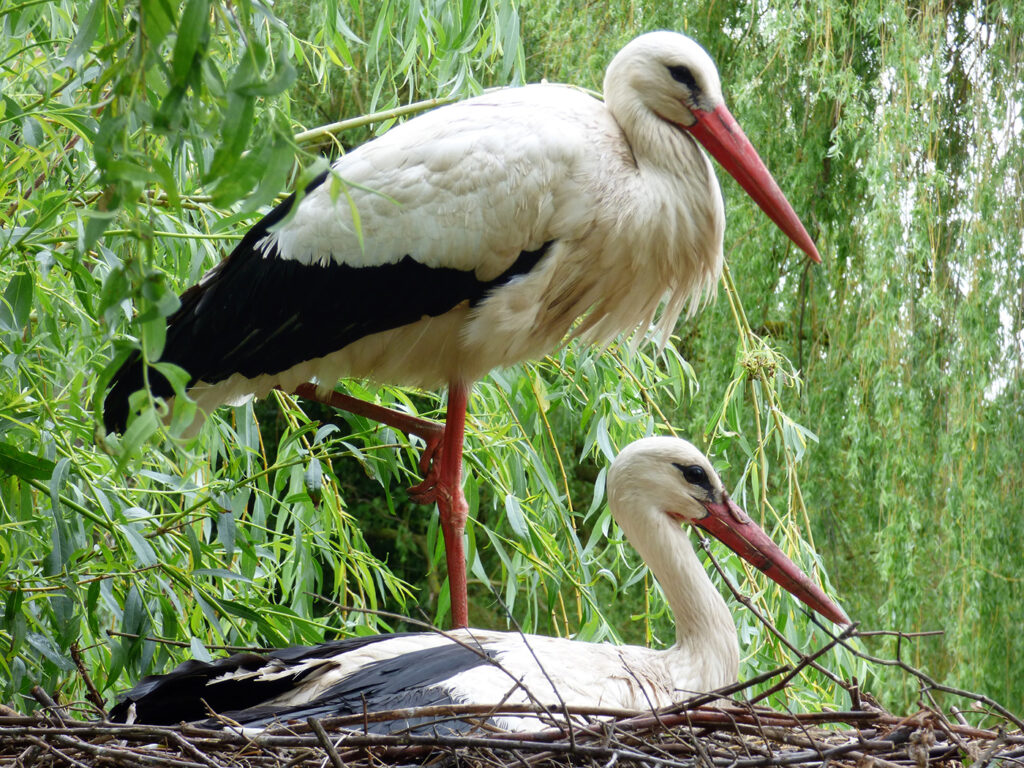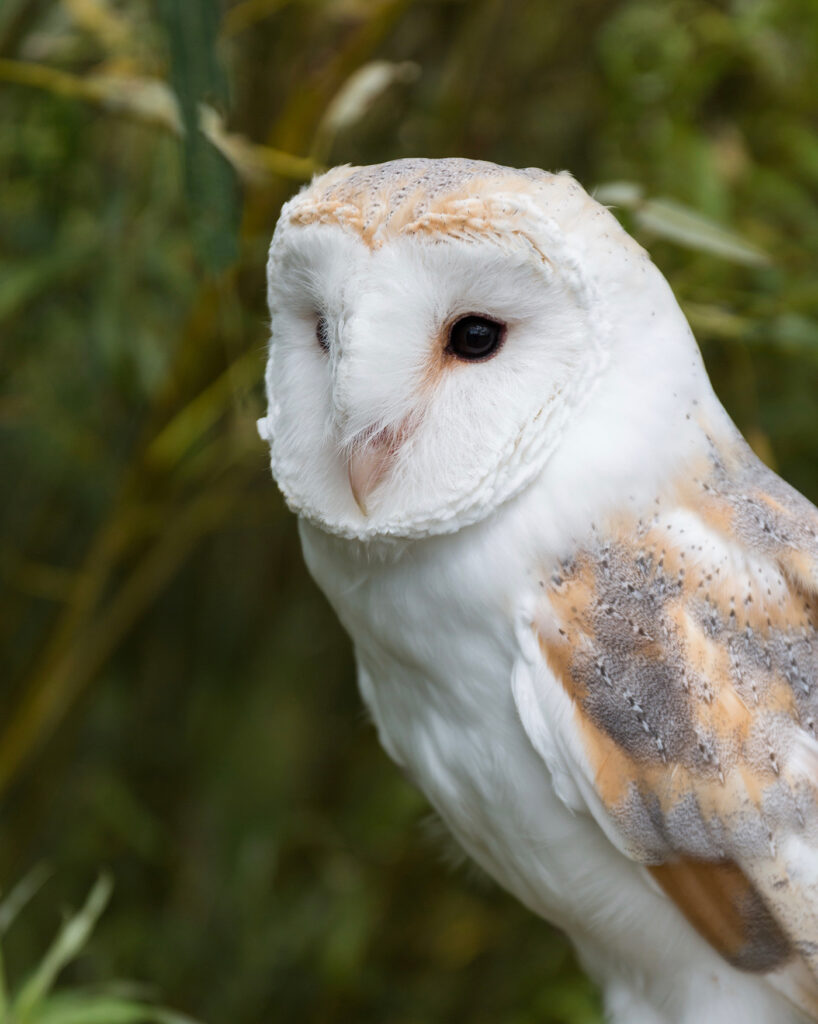Deconstructing the Farm


Derek Gow loved his life as a British farmer—but he didn’t love what farming did to animals and the ecosystem. In Birds, Beasts and Bedlam: Turning My Farm into an Ark for Lost Species, Gow recounts how he began to “deconstruct” his Devon farm into a haven for wildlife, from water voles and beavers to larks and lizards.
I knew when I paused to consider that hardly a lark or a lizard lived on my land. I am sure the flocks of meadow pipits, which were small to begin with, diminished even further in the very worst of times I imposed.
While this was ongoing, I was fighting, together with a few loyal friends, the case for the reintroduction of the beavers. Importing animals, supplying them for large penned enclosures, advocating at every level that the recovery of this life-giving species was essential. I kept breeding beavers in large pens on my farm where I saw the pools they built fill full in the spring with frogspawn and bring fish and birds to be. I reintroduced spare water voles into their watery worlds and orange-eyed pool frogs, and watched them prosper with pleasure. One year, a pal gave me a bucketful of baby grass snakes. I let these go in a beaver pond with my small son Kyle and watched them dive like dark darning needles down into its depths.
Ideas take time to form. To swirl and amalgamate. Nothing that clears quickly is ever right. Considered moments when you look back and think are critical. Deciding what to do in response requires care. Lingering overlong before acting is, however, a serious fault as decisions postponed for too long will one day for sure come too late. I recalled in the years following my purchase of the main farm that I had once seen a short-eared owl in a ditch. Its glaring gold eyes had stared back at me balefully as I looked down to note what it was before it rose on soft wings to fly off with a vole. I watched when a small flock of black-headed gulls came one spring to swim on one of our ponds for a day, or when a pair of whimbrels fed in a wet field in that same year for a very few hours. When the weather came cold and the ground froze, I was astounded one morning to find a few lapwings running like chickens around our farmyard. The cows had been outside while their streaming beds were changed and had broken the rough soil just a little. The birds were looking for any grubs they had exposed in doing so, utterly unbothered at all by us. I shut the yard that day and watched them when I had time. They were gone the next morning and have never come back. One year a pair of the wheatears that cross our farm annually to reach Dartmoor spent weeks in a meadow prospecting its long grass. I noticed and left that field for hay but a dry spring extended into summer and the cows were hungry. Eventually I opened the gate.

I have no idea what happened to the birds.
The saddest going was the curlews. In the time I have been here they have come three times. Twice, in the dawn of a morning, a single large brown bird rising alone, calling, calling, calling its distinctive “whauping” lilt. Once, a pair stood clear in the midday sun of a newly shut-up hay meadow which we rented, where the grass was beginning to outgrow its winter sheep scalping. One watching while its mate fed in the warm soft soil before stooping to probe for a short time at her side. I have never seen them here again since and am sure that these were the last of the chicks born 30 years ago in a landscape that we have now denied quite utterly to them. Were they privileged as individuals to survive the dismembering of the wet meadows and moors, the deep ploughing and the drains? Or was their life one of eternal regret?
No mates. No home. No future.
My final straw came not with them. It occurred when we ran a small-mammal trapping course for a conservation society in one of our woodlands with clearings scattered through. We had grazed a small herd of beef cows and calves there the previous autumn but had removed them when the rains came, for overwintering in straw-bedded sheds in our main farmyard. I wanted to show the course participants a range of common small mammals of the countryside and set 70 live catch traps to procure them. The following morning, we caught a single wood mouse. I could not believe it. We moved the traps slightly and baited again. The next day we caught two mice, one of which we had previously caught, as it had, to its irritation, been marked with Tipp-Ex. It was a shocking result, and more disturbing still, although I looked in what long grass there was, I could not find a single fresh field vole run or feeding pile. This tiny gray-brown rodent, shortsighted and bumbling, is the basis of raptorial food chains. The commonest of creatures that should have been.

No voles = no vole eaters. It’s as simple as that. Their absence from my farm explained categorically why the barn owls and kestrels were no longer there.
It was enough. I was and am sick of their loss. I am appalled as I write this that these memories, which I know were only fleeting impressions drawn from moments of observation, remain so clear in my mind to this day. Though their passing was swift and I was so busy that I gave them no time, my memory is long and I think of their going now with anguish. I knew I had to change.
In 2018, I began deconstructing. The livestock in the flocks and herds we had been building for over a decade all began to go. Old pals and their calves. Sheep looking good. I could not stand the dispersal sales. I did not attend. I did not want to see them split from their friends, from their families. It hurt as the barns, sheds, and fields emptied. People left too. Others, including my own son, were and are still bewildered by my actions. To carry on failing and lying would have been far easier to do.
Woodlands Farm adjoins Coombeshead Farm, which we bought in 2015, across a watercourse in a valley bottom. This unimproved lowland was always tangibly tanged by water mint when the cows crushed through. I fenced the cattle out and had a series of long pools excavated there as soon as both farms became one. A chance escape in 2013 from our breeding pens meant that beavers found these well-lined with rush and willow and slid deep into their clear still waters. I found their first peeled sticks around a month after they had gone and knew that their freedom would be challenged.
The police were informed that their presence was illegal and sent an investigatory officer. When I explained that a badger, by digging from the outside into their pen, had helped them with this jailbreak, he laughed, went to see his chief constable, and came back to tell me that it was an “act of God” and, as such, beyond human jurisdiction. The officials sent by Natural England eventually appeared to do their own whining on a fine spring day, when the woodland flowers released from their dark canopy by beaver coppicing were blooming around the rims of the by-then many more pools they had built. As we walked gloomily over a ridge to view their handiwork, one official caught for a moment by the spectacle said, “This is beautiful,” before stopping herself and returning to gloom. There must be subsections and clauses in their contracts that allow no joy. It’s difficult to imagine how such blind unenthusiasm prevails. They disagreed with me as to what should be done, and I refused to collaborate with them. They went away telling me they would be back. That was eight years ago and, while I wait still with bated breath, the beavers have long ago moved on.
I believe now quite firmly that they have come back to heal. A natural blessing whose offspring have rippled out to the mouth of the River Tamar as far as its tidal pulse and found there wetlands where they can live in peace. Complex watercourses and wetlands now extend well down our valley and into our neighbor’s lands as well who are mainly content. Ducks of many sorts fly in and out. Otters hunt fish where they could never before in ponds that are boiling with fry. Amphibians abound. Dragonflies, damsels, demoiselles, and darters whirr freely and butterflies are everywhere. Lizards have returned.
Excerpted from Birds, Beasts and Bedlam: Turning My Farm into an Ark for Lost Species by Derek Gow, Chelsea Green Publishing, June 2022. Reprinted with permission from the publisher.
|
Derek Gow
is a farmer and nature conservationist who has played a significant role in the reintroduction of the Eurasian beaver, the water vole, and the white stork in England. His conservation work has been featured in The New Yorker, The Washington Post, The Guardian, BBC, The London Times, and numerous other national and international media. He lives with his children on a 300-acre farm on the Devon/Cornwall border, which he is in the process of rewilding. He is the author of “Bringing Back the Beaver” (2020) and “Birds, Beasts and Bedlam” (2022).
|







